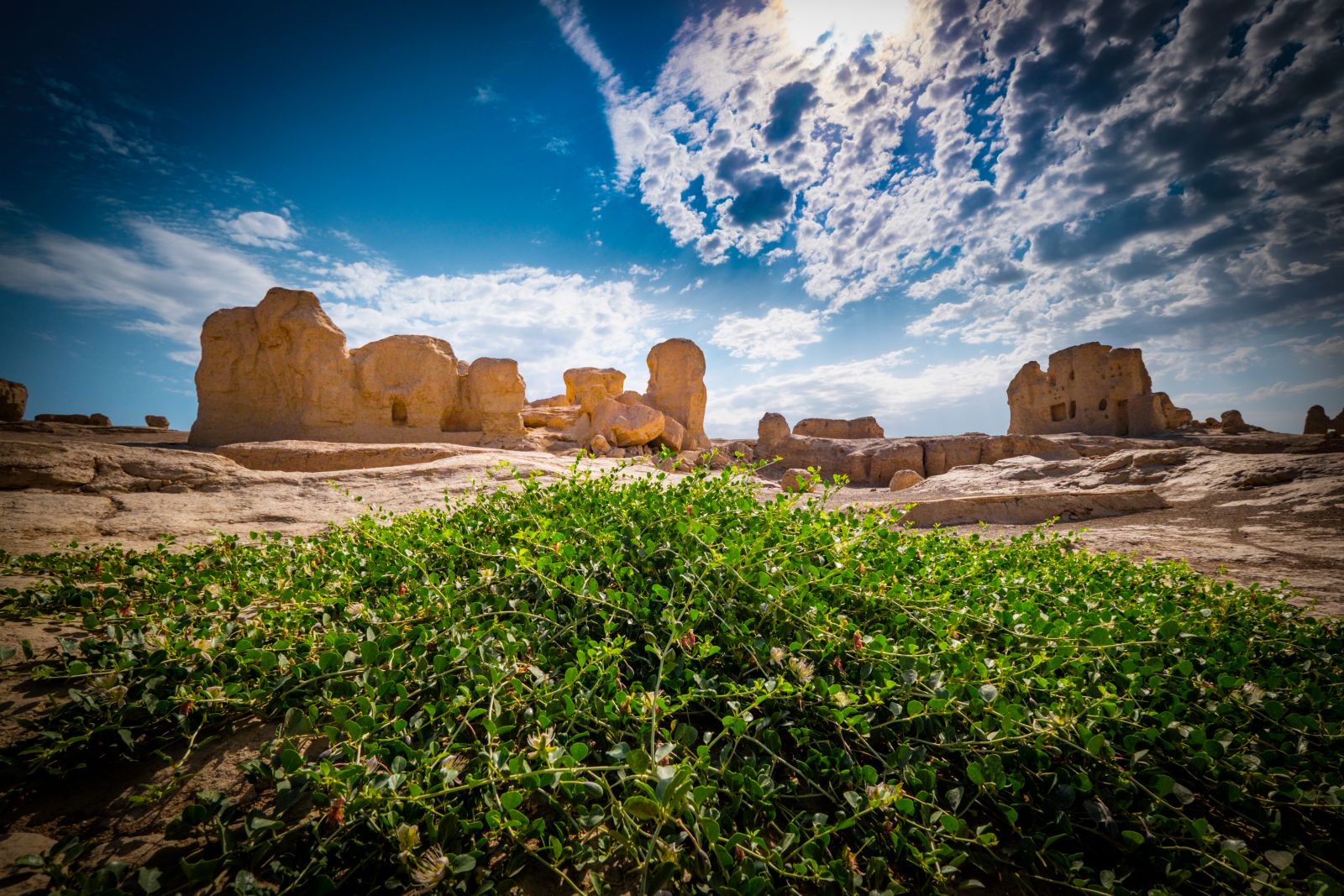Chinese Name: 交河故城 Pronunciation: Jiᾱohé Gùchéng
Admission Ticket Fee: 70 yuan
Opening Hours: 9:00-20:00
Suggested Visiting Hours: 2 Hours
Building Time: 2nd-5th century BC
Best Visiting Time: March-May and September-November
Address: Yarnaz Valley, Turpan City, Xinjiang Uyghur Autonomous Region, China
Function: It was the Anterior Jushi Kingdom’s capital city, regarded as an important site along the Silk Road.
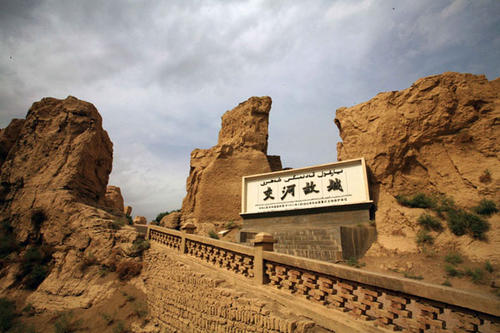
The Jiaohe Ruins is an ancient city located in Yarnaz Valley, about 13 kilometers west of Turpan City, Xinjiang Uyghur Autonomous Region, China. It is on a 30-meter high loess plateau at the intersection of the two rivers in the Yarnaz Valley. It stretches for 1650 meters long and the widest part in the middle is about 300 meters, which looks like a willow-leaf-shaped peninsula from the sky. The ancient city was the capital of Anterior Jushi Kingdom, one of the thirty-six countries in the ancient Western Regions. It was regarded as the political, economic, military, and cultural center of the country.
The Jiaohe Ruins has been preserved well due to the Turpan’s arid land and rainless environment. The buildings are all built with rammed earth, and the shape and layout are similar to the Chang’an City, the capital city of the Tang Dynasty. You can also find marketplaces, government offices, Buddhist temples, pagodas, streets, and alleys, as well as workshops, residential buildings, military training grounds, Tibetan military trenches, and clay bodhisattvas in temples. The temple occupies an area of 5,000 square meters and has a well. 101 pagodas together comprise a group. The ancient city is like a big willow leaf in an aerial view.
The Jiaohe Ruins is the largest, oldest, and best-preserved earthen building city in the world. It has the most complete urban relics that was preserved for more than two thousand years, and the site was listed as a national key cultural relics protection unit in 1961. On June 22, 2014, the Jiaohe Ruins, as a site of the joint application for the “Silk Road: the Routes Network of Chang’an-Tianshan Corridor” by China, Kazakhstan, and Kyrgyzstan at the 38th UNESCO World Heritage Committee meeting held in Doha, Qatar, was successfully listed in the World Heritage List.

The Jiaohe City was once the capital city of the Anterior Jushi Kingdom. It was founded and built by the Jushi people during the 2nd century BC to the 5th century BC, and reached its peak in the Southern and Northern Dynasties and the Tang Dynasty. From the 9th century to the 14th century, due to its strategic position, wars happened here successively and the Jiaohe City gradually declined. The Turpan area had been in wars for many years in the late Yuan Dynasty. Jiaohe City was seriously damaged and was finally abandoned after the wars.
In the 14th century, the Mongolian nobleman Qaidu and other rebels attacked Gaochang City and Jiaohe City successively after cruel wars. At the same time, the Mongolian rulers forced the local residents to abandon their traditional Buddhist beliefs and convert them to Islam. Jiaohe City finally finished its life course under the double blow of spirit and material.
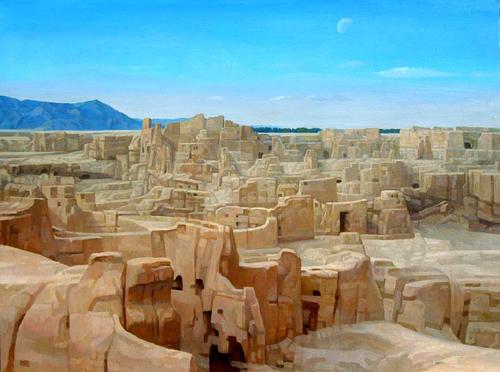
The main structure of the city’s architectural layout is still miraculously preserved through thousands of years of vicissitudes. All these benefit from Turpan’s unique climate which is extremely dry with little rain. The buildings of Jiaohe Ruins are generally the Tang Dynasty architecture style, and the buildings are mainly gathered in a range of about 1,000 meters in the southeast of the plateau. The ancient city is facing cliffs, and people have built three gates on the cliffs on the east, west, and south sides.
The architectural layout of the Jiaohe Ruins mainly consists of three visible parts: a central avenue running through the north and south that divides the residential area into east and west parts; at the north end of the avenue is a large temple.
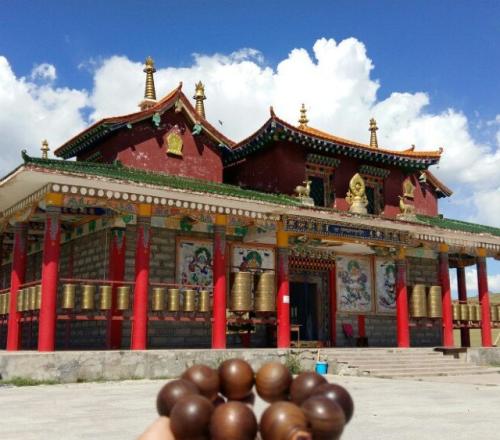
At the north end of the central avenue is a large-scale temple, which forms the northern temple area. The construction area of this district is about 90,000 square meters. Most buildings are rectangular courtyards with doors facing the streets. From the perspective of each courtyard’s layout, it was regarded as a temple; especially the main room has a square pillar, which should be an altar or a pillar of the pagoda.

The southern part of the eastern district beside the avenue is a large residential area with a construction area of about 78,000 square meters. The northern part is a small residential area. The central part is for government offices. In the west district, apart from the residential areas, there are also many handicraft workshops.
Tall street walls stand on both sides of the city avenue, and there are no doors or windows in the walls. Therefore, the invaders could hardly find doors to enter the house. The streets and alleys were planned north-south and east-west, vertically intersecting, and divided the 360,000-square-meter city buildings into several communities. These constructions are similar to the squares and streets of the ancient Chinese cities. This architectural layout shows that the Jiaohe City had undergone a planned reconstruction in the Tang Dynasty. The traces of the city before the Tang Dynasty were totally disappeared.
From its urban layout, the traditional urban architectural style of the Central Plains had a strong impact on its layout and at the same time, it also had its own unique local characteristics. The transportation network, city gates, and other buildings with streets and alleys as the main construction were built with military defense systems as the leading ideology for the layout. The ancient city was a substantial military fortress, reflecting the intense ethnic and social conflicts in this area in history.

It is also unbelievable that the Jiaohe City was a city without city walls around it. It was built in an unusual way. Most buildings in the entire city were built by digging down into the earth. People dug down from the ground surface of the highland, thus forming this city. The walls of temples, government offices, city gates, and residential buildings are basically made of raw earth, especially the streets and lanes, long and deep as winding trenches. We can say that this city is an enormous ancient sculpture. Its unique architectural craftsmanship is not only unique in China but also rare in other countries. It shows the wisdom and extraordinary creativity of the ancient working people.
Water is the source of life. The ancient well was more than 2000 years old, and the water has been in the well for thousands of years. The Jushi people held up the excavating tools in their hands 2300 years ago. Firstly, they dug a well in this city to find the source of underground water for survival and then dug soil to build a house. They dug the soils to get the wall of the house on the flat ground and built a roof on the wall without using a pillar. Then they lived in that house. It prevented the wind and rain outside the house. After that, they began to enlarge their homes and cities.
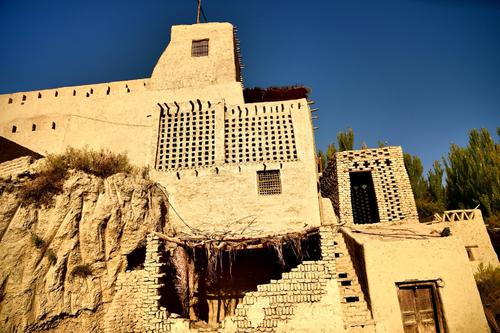
They thought of recommendations for their belief. Therefore, they built the Buddhist temple at the top of the central axis of the city. It was centered on a tall pagoda, surrounded by 25 small pagodas. There are 100 small pagodas surrounding a large one as a formation of troops. It is mysterious and still has a sense of grandeur even today.
There are also graves of more than 200 babies neatly arranged in this ancient city. Each tomb’s length is less than 1 meter, and the width is less than 0.5 meters. Why are so many babies of a similar size buried in the same place? Was it caused by an epidemic or a war? No one can clearly explain it even today. This is a big mystery in the Jiaohe Ruins.
1. There are no roofs and trees to prevent hot sunshine at the site. We suggest you to bring a hat and sunglasses.
2. Please prepare enough drinking water.
3. Please don’t walk out of the brick path that was built for visitors. We shall protect the Jiaohe Ruins.
4. Take the map and follow the guide to avoid getting lost in the tourist attractions.
Chinese: 请带我去交河故城。English: Please take me to the Jiaohe Ruins.
If you take a taxi from Turpan Jiaohe Airport to the Jiaohe Ruins, it takes about 35 minutes (40 yuan).
If you take a taxi from Turpan Passenger Transportation Center to the Jiaohe Ruins, it takes about 20 minues (15 yuan).
If you take a taxi from Turpan North Railway Station to the Jiaohe Ruins, it takes about 30 minutes (35 yuan).
